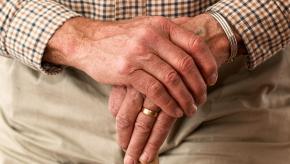All News
Should we be using JAKi more in female SpA patients?
In recent years, data has emerged suggesting that female patients with spondyloarthritis, both psoriatic arthritis and axial spondyloarthritis, may have worse outcomes than male patients. A number of post-hoc analyses of randomised controlled trials of both TNF inhibitors and IL-17 inhibitors suggest that this phenomenon is also manifested in the responses to these agents; female patients do less well than male patients. The mechanisms behind this remain to be fully elucidated.
Read ArticleRheumatology’s Blind Spot: The Persistent Exclusion of Older Adults
As the population ages globally, rheumatologists are caring for an increasingly older patient population more than ever before. In RA alone, nearly 40 percent of patients are now aged 65 years or older. Yet the evidence guiding our treatment decisions continues to come from studies that rarely include them, giving rise to a fundamental question: do we really know how best to treat older adults with rheumatic diseases?
Read Article

Links:


Mrinalini Dey DrMiniDey ( View Tweet)

Mrinalini Dey DrMiniDey ( View Tweet)



Mrinalini Dey DrMiniDey ( View Tweet)


#ACR25 Abstr#1525 Find me at poster hall. Super-responders exist with rituximab, not just confined to CAR-T! Our cohort study = 23/114 (20%) had resp duration >3-yrs; 15/23 were IS-Free. Poor prognostics (Non-White, APS) & shorter #SLE duration predicted super-tesponse @RheumNow https://t.co/nJQFmiIj2n
Links:

Links:

Links:











